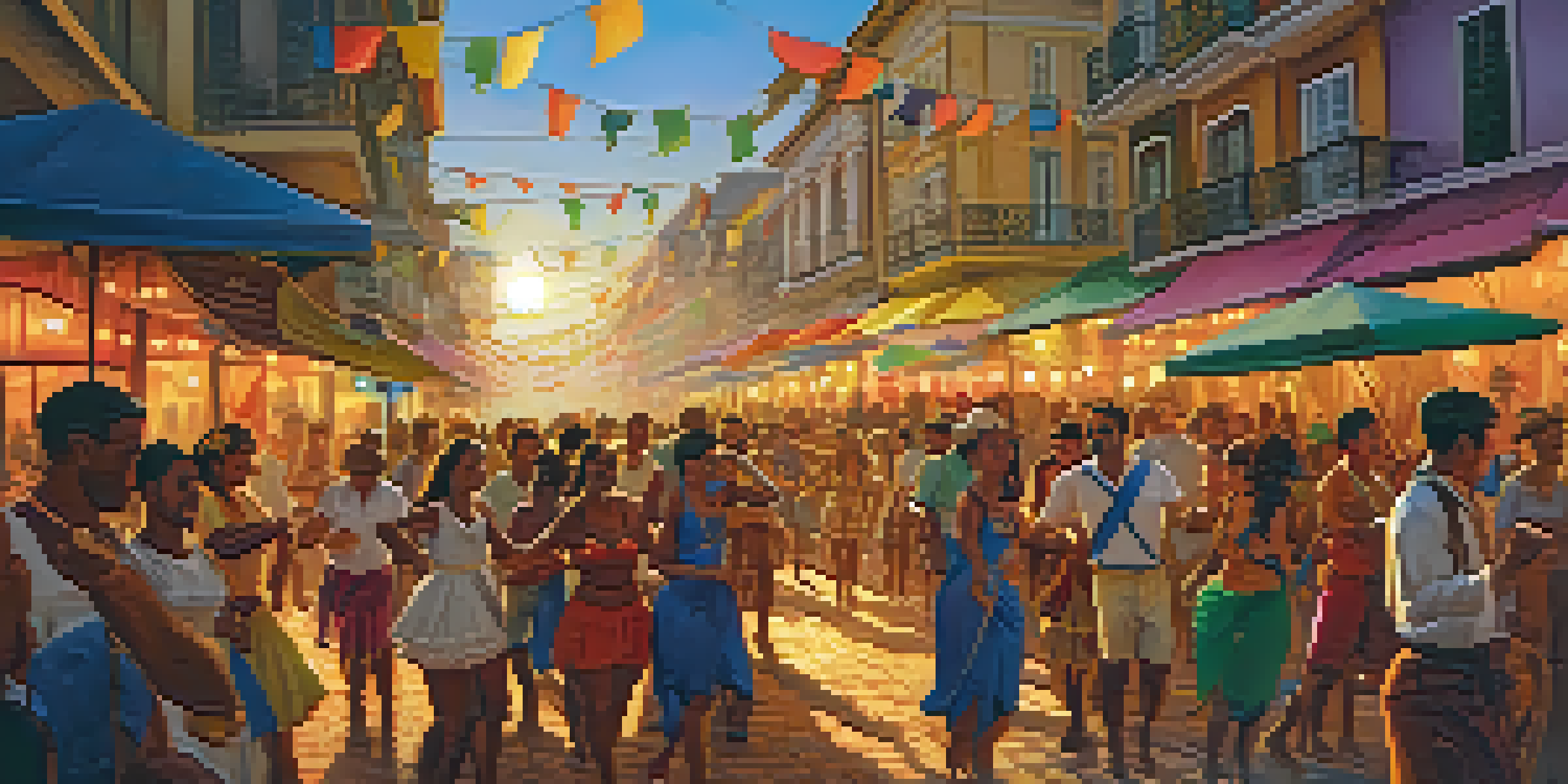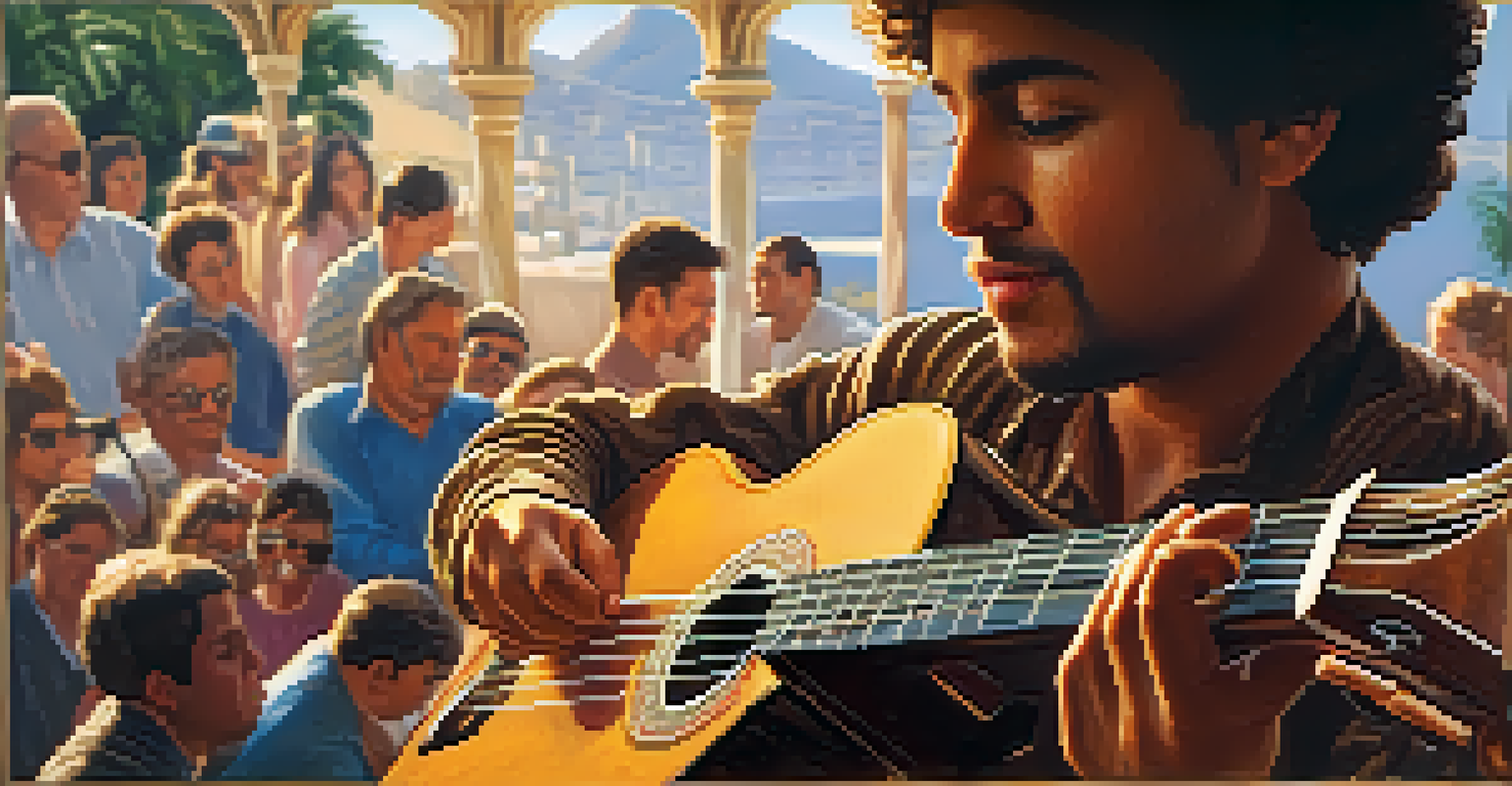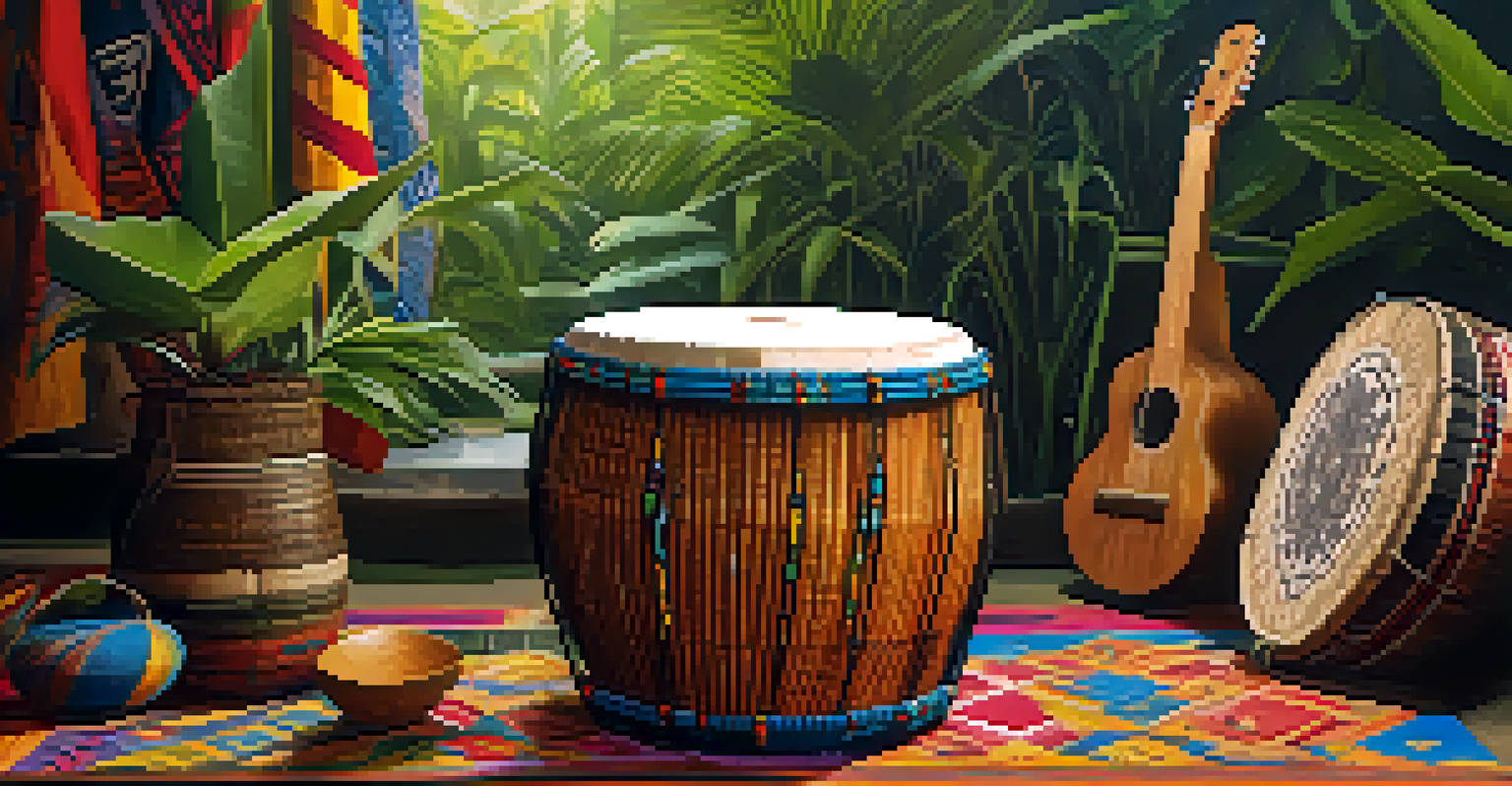Traditional Brazilian Instruments: A Tour of Sounds

Introduction to Brazil's Musical Heritage
Brazil is a vibrant tapestry of cultures, and its music reflects this diversity. Traditional Brazilian instruments are not just tools; they are storytellers, each with its unique sound and history. From the rhythmic beats of the samba to the soulful melodies of bossa nova, these instruments are at the heart of Brazil's musical identity.
Music is the shorthand of emotion.
Understanding Brazilian music begins with recognizing the influence of indigenous, African, and European elements. This fusion has birthed a variety of genres, each with its distinct flavor and sound. The instruments used in these styles are vital in shaping the character of the music.
In this article, we'll take a closer look at some of the most iconic traditional Brazilian instruments, exploring their origins and how they contribute to the rich musical landscape. So, let’s dive into this melodic journey and discover the sounds that define Brazil!
The Berimbau: The Voice of Capoeira
The berimbau is a single-string percussion instrument that has become synonymous with capoeira, a Brazilian martial art that blends dance, music, and acrobatics. This instrument is made from a wood bow, a wire string, and a gourd resonator, producing a unique sound that commands attention. Its rhythmic patterns set the pace for capoeira movements, guiding practitioners through their performances.

The berimbau’s sound is both haunting and energizing, often accompanied by traditional songs sung by those participating in the capoeira circle. The musician plays various rhythms, each conveying different emotions or signaling specific actions in the game. This relationship between the berimbau and capoeira demonstrates the deep connection between music and movement in Brazilian culture.
Brazil's Music Reflects Cultural Diversity
Brazilian music is a vibrant fusion of indigenous, African, and European influences, with traditional instruments at its core.
Beyond capoeira, the berimbau symbolizes resistance and cultural identity. It tells a story of African heritage and the struggle for freedom, making it a powerful instrument both in sound and significance. As we explore more instruments, it’s essential to appreciate how the berimbau encapsulates the spirit of Brazilian music.
The Cavaquinho: A Mini Guitar with Big Impact
The cavaquinho is a small string instrument similar to a ukulele but with a distinct sound that resonates in Brazilian music. Often associated with samba, its bright tones add a lively essence to many traditional songs. The instrument typically has four strings and is played by strumming or plucking, creating a cheerful sound that invites everyone to dance.
The beauty of music is that it connects people. It carries a message, and we can feel it regardless of language or culture.
Historically, the cavaquinho was introduced to Brazil by Portuguese settlers and quickly adapted to fit local musical styles. Its ability to blend seamlessly with other instruments makes it a staple in various genres, from choro to pagode. The cavaquinho is not just an instrument; it’s a symbol of the joyous spirit that characterizes Brazilian celebrations.
When you hear the lively strumming of a cavaquinho, it evokes images of vibrant street parties and festive gatherings. This instrument brings people together, encouraging them to join in the music and celebration. As we continue our journey, let’s explore another instrument that plays a crucial role in Brazil’s musical tapestry.
The Pandeiro: The Heartbeat of Brazilian Rhythms
The pandeiro is a hand frame drum that plays a central role in Brazilian music, known for its versatility and dynamic sound. Similar to a tambourine, it features jingles on the edges, adding a distinctive ringing tone when struck. Musicians can produce a range of sounds by using different hand techniques, making the pandeiro an essential instrument in genres like samba and forró.
This instrument not only provides rhythm but also enhances the overall energy of performances. Whether in a samba school parade or a lively dance hall, the pandeiro’s infectious beat gets everyone moving. It serves as a reminder of how rhythm is the heartbeat of Brazilian culture, uniting people through dance and song.
Traditional Instruments Tell Stories
Each traditional Brazilian instrument, like the berimbau and cavaquinho, carries unique histories and emotional connections to the culture.
The pandeiro’s origins can be traced back to various cultures, which highlights the interconnectedness of music worldwide. Its evolution in Brazil showcases how traditional instruments adapt and grow, reflecting the country’s diverse influences. Next, let’s take a look at another fascinating instrument that adds depth to Brazil’s soundscape.
The Atabaque: A Drum with Spiritual Roots
The atabaque is a tall, hand-played drum that holds significant cultural importance, especially in Afro-Brazilian religious practices like Candomblé. Made from wood and animal skin, the atabaque produces deep, resonant sounds that evoke a sense of spirituality and connection to the past. It is often played in ceremonies to call upon orishas, the deities of the Candomblé religion.
Beyond its spiritual role, the atabaque also features prominently in various musical styles such as samba and maracatu. Its powerful beats create a driving rhythm that propels dancers and musicians alike. The atabaque showcases how traditional instruments can bridge the gap between the sacred and the secular, enriching Brazil's musical landscape.
Playing the atabaque requires skill and an understanding of its cultural significance. Musicians often undergo extensive training to master the rhythms and connect with the instrument on a deeper level. As we continue exploring, let’s uncover yet another traditional instrument that adds its unique voice to Brazil’s sound.
The Viola Caipira: The Sound of the Countryside
The viola caipira is a traditional Brazilian guitar that embodies the sounds of rural life. With its distinctive tuning and folk melodies, this instrument carries the essence of Brazil’s countryside. Often played in sertanejo music, it evokes images of pastoral landscapes and simple living, resonating with many who cherish their roots.
This instrument has a unique construction, typically featuring ten strings and a warm, rich tone that fills the air with nostalgia. The viola caipira is commonly used in storytelling through music, with songs that celebrate love, nature, and everyday life. It serves as a reminder of the strong connection between music and the experiences of the Brazilian people.
Music Unites Communities in Brazil
The diverse sounds of Brazilian instruments not only celebrate life and heritage but also bring people together through music and dance.
The popularity of the viola caipira has grown beyond rural settings, finding its way into contemporary Brazilian music. Its adaptability allows it to blend with modern genres while retaining its traditional charm. As we wrap up our exploration, let's reflect on how these instruments collectively contribute to Brazil's dynamic musical identity.
Conclusion: The Rich Tapestry of Brazilian Sounds
Brazil's traditional instruments are not just musical tools; they are integral to the country’s cultural identity. Each instrument we’ve explored tells a story, reflecting the diverse influences that shape Brazil’s rich musical landscape. From the rhythmic beats of the berimbau to the melodic strums of the cavaquinho, these sounds resonate with the heart and soul of the Brazilian people.
As we’ve seen, music in Brazil is a celebration of life, community, and heritage. These instruments play a vital role in bringing people together, whether in joyful festivities or solemn rituals. They remind us of the power of music to transcend boundaries and connect us all.

In appreciating these traditional instruments, we gain a deeper understanding of Brazil's cultural richness. So, the next time you hear the sounds of Brazil, take a moment to appreciate the stories behind each note and the heritage that continues to thrive through music.